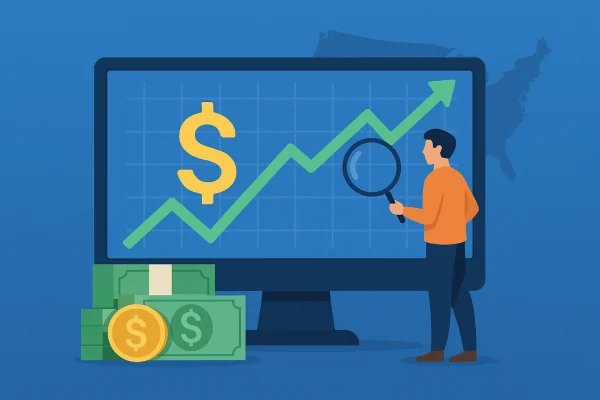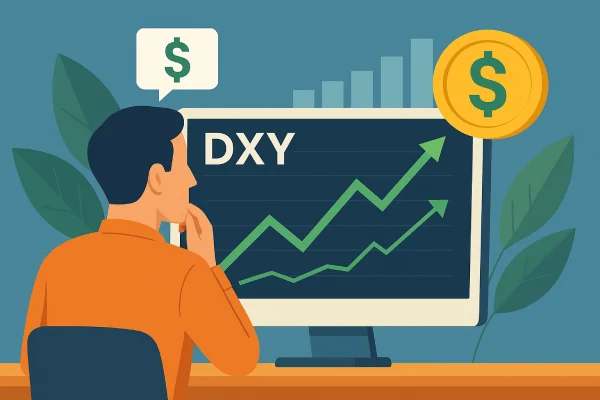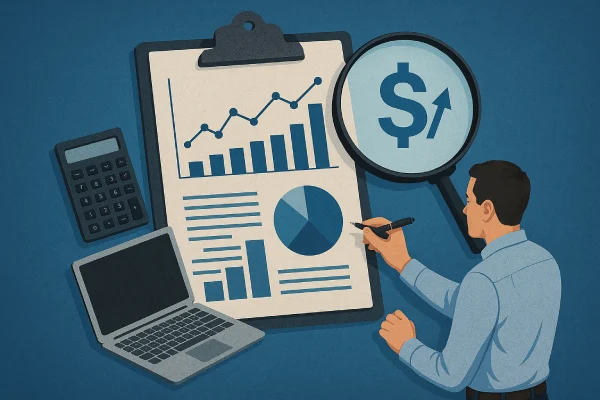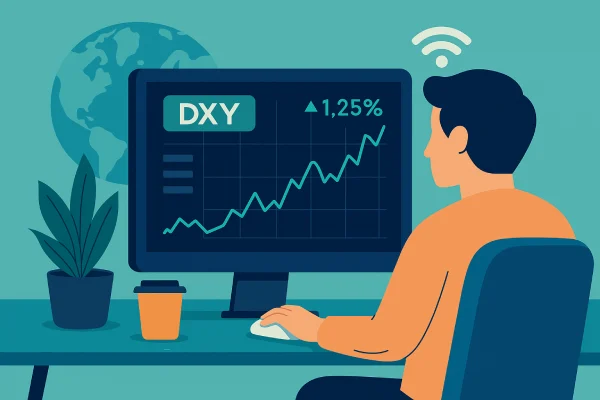What Is the DXY? A Guide to the Dollar Index
What Is the DXY? A Guide to the Dollar Index
"Learn how the U.S. Dollar Index reflects the value of the dollar compared to major currencies, and why it impacts forex trading"
Wikilix Team
Educational Content Team
13 min
Reading time
Intermediate
Difficulty

If you've seen a financial news segment or read about the forex market, you have likely heard of the "DXY" or "Dollar Index." It's typically mentioned in passing, with little explanation, which is unfortunate since very few people truly understand what it is—or why it matters. For traders, investors, and others trying to understand global monetary movements, the DXY is a crucial part of the overall picture.
So, what the heck is the U.S. Dollar Index? Why do traders reference it so frequently? What does this one simple assessment give you that may help you make better financial decisions?
This guide will explain it all in simple and practical terms, so even if you are a forex newbie or merely a curious investor, you will leave with a good understanding of how the DXY works and why you should pay attention to it.
What Is the U.S. Dollar Index or DXY?
The U.S. Dollar Index, or DXY, is a measure of the "value" of the U.S. dollar about a basket of foreign currencies. It is a benchmark to help you understand how strong (or weak) the dollar is relative to its major trading partners.
The DXY was first established by the U.S. Federal Reserve in 1973 to provide a standardized view of how the dollar was faring worldwide, and thus, give an easy-to-reference tool for understanding. The index is a weighted geometric average of six key currencies:
• Euro (EUR) – a weight of ~57.6%
• Japanese Yen (JPY) – ~13.6%
• British Pound (GBP) - ~11.9%
• Canadian Dollar (CAD) - ~9.1%
• Swedish Krona (SEK) - ~4.2%
• Swiss Franc (CHF) - ~3.6%
Important point: The DXY does not account for emerging market currencies such as the Chinese yuan or the Mexican peso, even though they are significant factors in today's trade.

How Does the DXY Work?
The DXY is a relative index. It increases when the U.S. dollar strengthens against a basket of currencies and decreases when the dollar weakens.
For example:
• If the DXY is rising, this generally means the U.S. dollar is strengthening.
• If the DXY is falling, the dollar is losing value relative to its peers.
The index is based on a level of 100 established in 1973. So, if DXY is reading 105, the dollar has appreciated 5% since then.
Why Is the DXY Important to Traders and Investors?
📌 1. It Supports Global Sentiment for the Dollar
The DXY is used as more than a number. It represents how investors feel about the U.S. economy, interest rates, and risk appetite. In a time when the dollar is strengthening, it supports the idea that investors feel good about the U.S. economy or are gravitating toward it. It Impacts Commodity Prices.
Many commodities, such as gold, oil, and copper, are priced in dollars. Therefore, when the DXY rises a dollar higher, the value of a commodity typically means the price of that commodity will go down. Why? When the dollar rises in value, those commodities are worth more in foreign currencies.
📌 3. It Impacts Corporate Earnings and the Exports
A strong dollar will negatively impact firms that rely on exports. From their perspective, their prices go up overseas. On the flip side, a weaker dollar provides an advantage in trade abroad.
📌 4. It Is Important for Forex Traders
In the FX market, all currency values move against one another. Knowing what the DXY is doing can assist in predicting whether, and in what direction, pairs are headed. For example, the DXY is inversely related to the EUR/USD markets.
USD/JPY and GBP/USD markets move against the DXY.

Real Example: How the DXY Does Impact Markets
For example, let's say the U.S. Federal Reserve recently announced an increase in interest rates. Higher interest rates are usually reasonable for foreign investment, and as that investment increases, the demand for U.S. dollars increases.
What are we seeing in the market?
DXY spikes up
EUR/USD drops, as the euro declines vs our dollar
Price of gold declines, as the dollar price gains value, gold becomes less attractive
The emerging
How To Use the DXY In Your Analysis
Regardless of what you are trading —currencies, stocks, commodities, or even cryptocurrencies —monitoring the DXY can reveal necessary signals to capitalize on. Here's how to make it a part of your routine:
✅1. See it as a signal for Trend
If the DXY is exhibiting an obvious uptrend, you can lean towards trades that have the dollar on the stronger side (ie, short EUR/USD). If the DXY is exhibiting a downtrend, you can lean towards long positions in crosses like GBP/USD or AUD/USD.
✅2. Analyze it with other assets
Look at the DXY with charts for gold, oil, S& P 500, and bond yields; in doing so, you will start to see correlations. Typically, a stronger DXY comes with weaker commodities alongside weakness in global equities.
✅3. Look at it during major events
Be sure to analyze the DXY during:
• Fed interest-rate decisions
• Inflation reports (CPI, PPI)
• Non-farm payrolls
• Global geopolitical tensions
Events like this can lead to some pretty sizable moves in the dollar, and the DXY allows you to track that action as it unfolds.

Weakness of the DXY
While useful, the DXY is not without faults. What are the drawbacks? For one, it is outdated.
The basket currently in use represents outdated trade relationships; the economies of powerhouses such as China, Mexico, India, and Brazil all have much bigger, and growing, roles in global trade - their currencies are not part of the DXY index.
The DXY has a significant bias towards the euro, meaning it does not accurately represent the dollar's strength in any comprehensive manner.
Still, the DXY is utilized widely, mainly because of its relative consistency, high liquidity, and accessibility.
Where To Follow The DXY
Most trading platforms, as well as finance-related websites, will give you a live view of the DXY. Look for:
• Ticker symbol = DXY or sometimes USDX
• Charts: TradingView, MetaTrader, Investing.com
• Data sources: Bloomberg, CNBC, Reuters
You can also trade the dollar against an index instrument under some species:
• Futures (USDX) trading on the ICE Exchange
• ETFs (UUP or UDNT)
• Options and CFDs offered through brokers

Final Thoughts
The U.S. Dollar Index may be another technical indicator to follow, but it is a potent tool that could reorient your entire view of the market. It does not matter if you're trading forex or investing in equities; having a better understanding of the DXY helps relate the strength of currencies against USD, the global risk sentiment, commodity pricing, and loan profitability.
In a world of loud headline noise and rapidly-moving markets, the DXY, at the very least, provides some form of clarity.
So whether you are a beginner starting, or an experienced trader looking to develop your edge, do yourself a favour and create a habit of regularly actually looking at the Dollar Index. It may not attract your attention, but it often whispers the truth.
What's Next?
Keep building your knowledge with our structured learning path. Each section builds upon the previous one.
This is the first section
You're at the beginning of your journey!
This is the last section
You've completed this course!
